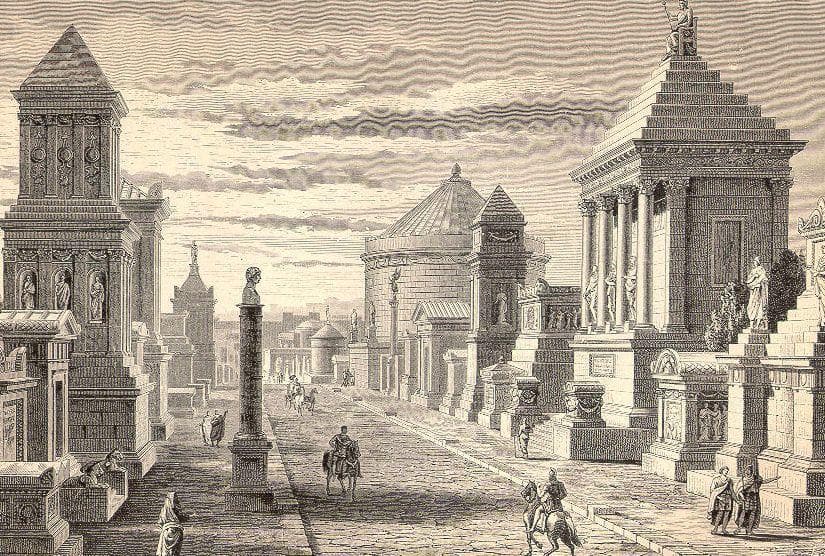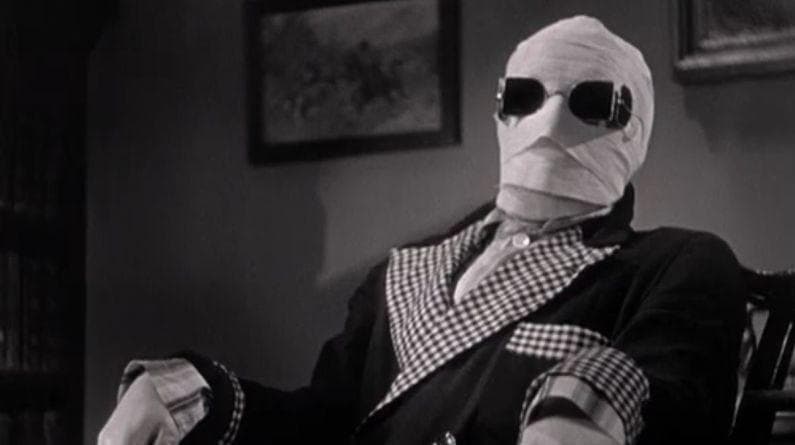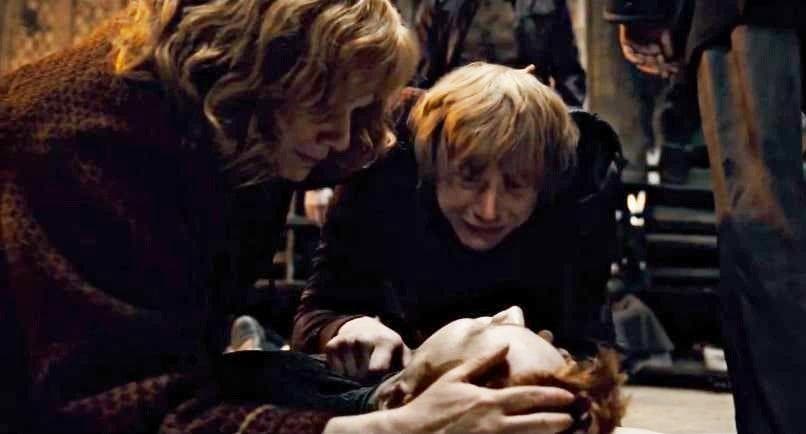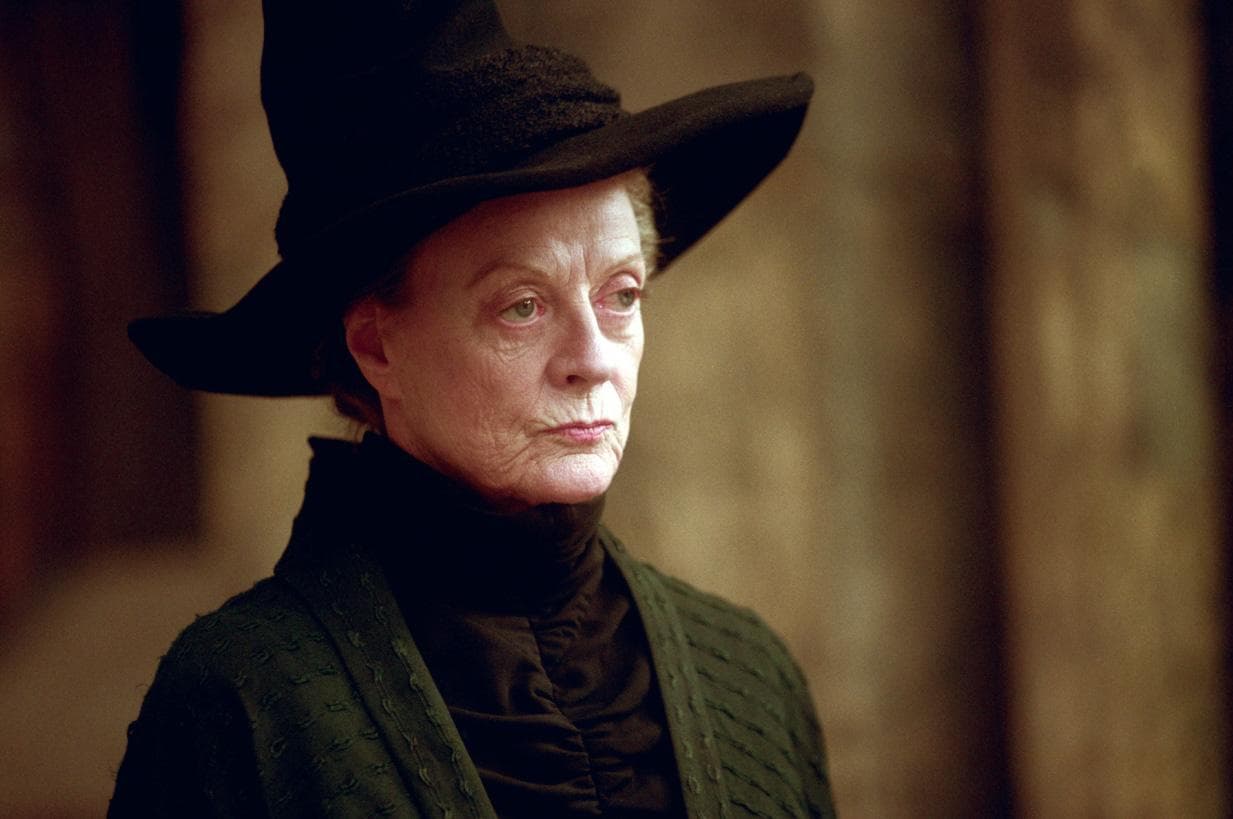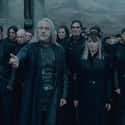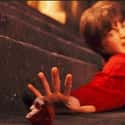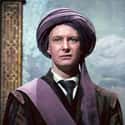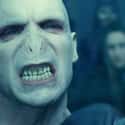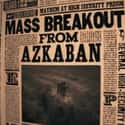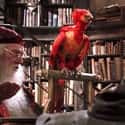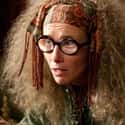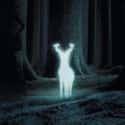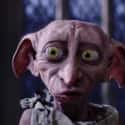-
(#1) The Death Eaters Allude To The Nazi Movement
It's no secret Harry Potter and the Half-Blood Prince producer David Heyman also produced the Holocaust drama The Boy in the Striped Pajamas. Apparently, his experience working on the film helped him wrap his mind around Voldemort and the Death Eaters because they shared similar ideals about blood purity.
“Voldemort and his followers, the Death Eaters, are obsessed with the preservation of blood purity,” Heyman said in an interview, “They’re not Nazis but they recall the politics and attitudes of Nazi Germany. And aesthetically—although it’s a cliché—the [Death Eater] Lucius Malfoy and his family are blond, like Hitler’s ideal of the quintessential Aryan.”
Throughout the series, prejudiced characters like Lucius Malfoy would use the term "half-blood" to refer to wizards who had muggles in their ancestry. This is similar to how Nazis used a Mischling test to determine whether or not a person had Jewish heritage. If a person was found to be Mischling (or mixed-blood) they could face racial persecution, which often included sterilization. According to JK Rowling, who only noticed the parallels after visiting a Holocaust museum, being a half-blood wizard was just as bad as being a full-fledged muggle to a Death Eater.
-
(#2) Nicolas Flamel Was A Real-Life French Scholar
Nicolas Flamel of the Harry Potter world is actually a real person. In the series, Flamel is the only known maker of the Philosopher's Stone, which grants immortality with the Elixir of Life. According to Pottermore, the real Nicolas Flamel hails from fourteenth century France. Had he survived as he did in the book, he would have been around 665 at the time period in The Philosopher's Stone.
Historians can't agree on whether or not he was actually an alchemist, but he had an extensive library with alchemical texts and may have spent time trying to decode a mysterious book filled with alchemical symbols. The Philosopher's Stone also comes from history and is sometimes referred to as "the tincture" and "the powder." Believers in Western Alchemy thought the stone had the power to transform base metals into precious metals like gold and silver and could yield the elixir of life, the key to immortality.
-
(#3) The Death Eaters Attacks Are Reminiscent Of The Irish Republican Army (IRA)
The Death Eaters are pure evil, but they're also extremely reminiscent of the IRA, a republican paramilitary organization that sought to end British rule in Northern Ireland. The parallels are astounding when you consider the fact that Harry Potter takes place in the '90s - the same period that saw a number of terroristic incidents from various Irish paramilitaries before the IRA declared peace in 2005.
The attacks the Death Eaters carry out on the Brockdale Bridge in The Half-Blood Prince coincide with the IRA's real-life bombings throughout 1996 (including the two bombings carried out by the IRA, one of which caused a partial bridge collapse in 1939).
-
(#4) The Black Sisters Were Inspired By These Real-Life, Nazi-Loving Sisters
JK Rowling modeled the Black Sisters (Bellatrix Lastrange, Narcissa Malfoy, and Andromeda Tonks) after the real life Mitford Sisters. The Mitford family was widely known in World War II for their fascist sympathies, much how the Black Sisters are linked to Voldemort.
Ballatrix, who was a favorite of Voldemort, is inspired by Unity Mitford, who was in love with Hitler. Narcissa, who married the Death Eater Lucius Malfoy, is inspired by Diana Mitford, who left her husband in 1932 to marry the head of the British Fascist Party. Andromeda, who shamed her family by running off to marry the Muggle-born Ted Tonks, is likely inspired by Civil Rights advocate Jessica Mitford, the lone communist in the Milford family. Andromeda's decision led to great animosity between her and her sisters.
-
(#5) The Reason You Don't Name Your Kid After A Wolf In Harry Potter
JK Rowling uses mythological names to foreshadow various events in Harry Potter. If Rowling gave you a mythological wolf-related name, you're eventually turning into a werewolf. Remus Lupin's name is a nod to the myth of Romulus and Remus, a set of twins in Roman mythology who were raised by a she-wolf and allegedly founded Rome.
Meanwhile, Fenrir Greyback, who bites Lupin and turns him into a werewolf, gets his name from Norse mythology where Fenrir is a giant wolf. Fenrir was known as a malevolent figure who carried out acts of evil, which makes his name fitting for the villainous Greyback.
-
(#6) Quirinus Quirrell Is Straight Out Of Ancient Rome
In Harry Potter and the Sorcerer's Stone, Quirinus Quirrell secretly has the face of Voldemort hidden on the back of his head. He covers it up with a turban, so we only see it during a big reveal at the film's climax. The whole idea of Quirrell's second head comes from Roman mythology.
The Roman god Janus Quirinus has two faces. He was the Roman god of doors and beginnings, which may be a nod to the fact Quirrell was the first villain in the franchise.
-
(#7) Voldemort Was Doomed From The Start Thanks To Oedipus
Merope Riddle is the mother of Voldemort and the reason you should never use a love potion to start a family. Merope used a love potion to make Tom Riddle fall in love with her and eventually had her son, Tom Riddle Jr. Tom Riddle Jr. eventually killed Tom Riddle Sr. after discovering he was a muggle. This turn of events was predicted by ancient Greek mythology.
In Greek mythology, Merope is Oedipus's adoptive mother. Like the story goes, Oedipus unknowingly kills his father and marries his biological mom, unaware of the family relations. Voldemort, like Oedipus, was not raised by his biological family and instead was brought up in an orphanage. Voldermort did kill his own father, but never got the chance to act out the incestuous portion of the myth as his mother died in childbirth.
-
(#8) Hedwig Was Made To Take Care Of An Orphaned Harry Potter
Hedwig was Harry's trusted pet owl. She was glued to the star's side throughout the entire series until she was tragically killed by a Death Eater while trying to protect her faithful owner (arguably the cruelest thing JK Rowling has made us witness). This is pretty significant because Hedwig's name foreshadowed her fate.
Hedwig gets her name from Saint Hedwig of Silesia. St. Hedwig's life's work was protecting and caring for abandoned and orphaned children. She's often referred to as the patron saint over the death of children. Given the real life saint's dedication to helping children in need, it makes sense Hedwig would be willing to die for her beloved master.
-
(#9) Azkaban's Mass Escape Mimics Britain's Biggest Prison Break Ever
If you've seen or read Harry Potter and the Origin of the Phoenix, you're familiar with the headline "Mass Breakout From Azkaban" in a 1996 article. In the incident, about 10 Death Eaters escaped from the heavily guarded prison, and Sirius Black was thought to be the mastermind behind the endeavor. This mimics the biggest jailbreak in UK history, carried out by members of the IRA.
According to BBC, the 1983 jailbreak occurred when 38 IRA members used smuggled guns and knives to overpower prison guards at the Maze and escape into the fields that surrounded prison. Though the real-life events didn't occur in the '90s, it's still one of the many parallels the Death Eaters have to the IRA.
-
(#10) The Weasley Twins Are British Royalty
It's either a total coincidence or some major historical knowledge on the part of JK Rowling, but George and Fred Weasley appear to be named after British royalty. In real life, King George III and Prince Frederick of Wales were not brothers. Instead, they were father and son. King George III took the throne when Prince Frederick died of pneumonia just before his 44th birthday.
This, of course, parallels Fred dying while George survived (and, presumably took over the pair's joke shop). Much like George Weasley, who was missing his left ear all-together, King George III was thought to be going deaf towards the end of his life.
-
(#11) Dumbledore's Phoenix Fawkes Is Named After Guy Fawkes
Dumbledore's beloved phoenix Fawkes may have been immortal, but he periodically died by bursting into flames and being reborn from the ashes. This event was called "Burning Day," which appears to be a nod to the British holiday Bonfire Night. Bonfire Night, which is also referred to as Guy Fawkes Night. The night commemorates the failed plot of Guy Fawkes, who tried to blow up the British Houses of Parliament with gunpowder as an act of protest against Protestant leadership. Brits typically celebrate with a gorgeous display of fireworks, akin to the explosive rebirth of Dumbledore's phoenix.
-
(#12) Sybill Trelawney Is Named After Ancient Fortune Tellers
Sybill Trelawney is a seer, a gifted witch with the ability to tell the future. She originally made the prophecy about Voldemort's return and Harry Potter's power to destroy him. She gets her name from ancient Greek mythology. The sibyls of ancient Greece told the future and even foresaw the end of the world.
Sybill's grandmother, Cassandra Trelawney, also got her name from an ancient Greek fortune teller. According to the myth, Cassandra was cursed with seeing the future but never being believed. She was the person who told the Trojans to not let the Trojan Horse through their gates, which ultimately led to the fall of Troy.
-
(#13) The White Deer Stems From Celtic Mythology
Deer (particularly glowing white deer) are a reoccurring Patronus for the Potter Family and wildly significant in a scene from The Prisoner Of Azkaban, where Harry is almost killed by Dementors. During the attack at the Great Lake, Harry fails to summon one of his spirit guardians. Just before he's about to be kissed by a Dementor, which would cause him to lose his soul in a fate worse than death, a white stag comes charging across the lake and drives it away. Harry believes the Patronus came from his deceased father, who was an Animagus and could take the form of a stag.
Celtic mythology believes that white deer act as messengers from another world, which is fitting as perhaps Harry's dad was trying to tell him something from beyond the grave. White deer can also mean you're about to be sent on a quest, of which Harry Potter is perpetually on.
-
(#14) Sirius Black's Dog Transformation Is Written In The Stars
Sirius Black is kind of an oxymoron considering that Sirius is the brightest star in our galaxy, but the Harry Potter character is still linked to the star in a major way. The real life Sirius is located at the edge of the constellation Canis Major, which is why it's often called the Dog Star. Sirius Black, who is an Animagus, regularly (and illegally) transformed into a Black Dog named Padfoot throughout the series.
Sirius isn't an outlier in his family. Most of the Black family are named after stars. In fact, Andromeda is named after a whole Galaxy.
-
(#15) Hermione's Fate Was Sealed In Shakespeare
Hermione gets her unique name from Shakespeare. She's named after Queen Hermione from The Winter's Tale. In The Winter's Tale, Queen Hermione is temporarily turned into a stone statue. Harry Potter's Hermione suffers a similar fate in Harry Potter and the Chamber of Secrets when she's petrified by the basilisk.
She also recovers, much like her counterpart.
-
(#16) Argus Filch Is Totally All-Seeing
Argus Filch is the enforcer of Hogwarts. He's seen as the wet blanket that swoops in to stop the students from having fun or making mischief, especially when they break Hogwards rules by doing so. He always seems to get kids into more trouble with their teachers and loves handing out write ups for the most minor infractions.
Like many Harry Potter characters, Filch's name carries significance. Argus was a Greek god with tons of eyes, meaning he could see a whole lot. In addition, "Filch" means to steal. Filch can be seen both as a stealer of fun in the Harry Potter world and he confiscated the Marauder's Map from James Potter.
-
(#17) The Salem Witch Trials Happened In The Harry Potter Canon, Too
The Salem Witch Trials are a notorious part of American history. Between 1692 and 1693, over 200 people were accused of practicing witchcraft in colonial Massachusetts. Just 20 of these accused were executed and the colony eventually admitted it was a mistake, but the trials remain an infamous part of history. It is still referenced in pop culture today, including the Harry Potter series.
JK Rowling brought in the idea of the Salem Witch Trials with Fantastic Beasts and Where to Find Them. This part of the series took place in America and brushed over the discrimination witches and wizards received in the 17th century. However, Harry's copy of A History of Magic in Harry Potter and the Prisoner of Azkaban does mention that one witch was burned over 47 times for alleged witchcraft, but used a Flame-Freezing Charm to evade death each time.
-
(#18) Old English Folklore Inspired Dobby's Name
Dobby's heartwarming loyalty to Harry and his eventual freedom made him a fan favorite for Harry Potter fans, but many do not realize the careful execution behind the beloved house elf's name. Dobby is actually an old English word that refers to an elf from fables. According to old stories, dobbies performed tasks secretly at night.
In these stories, dobbies were said to disappear when offered clothes or shoes. House elves, of course, gain their freedom when offered clothing from their master.
-
(#19) A German Literary Movement Inspired The Durmstrang School's Name
The Durmstrang Institute was first introduced in Harry Potter and the Goblet of Fire as the Scandinavian school contender in the Triwizard Tournament. Their name, like many names in the Harry Potter universe, was not picked at random, but this Rowling reference was particularly esoteric. The Durmstrang school was named after a little known German literary movement called Sturm and Drang, German for "storm and stress." The 18th Century movement wanted to overthrow rationalism associated with Enlightenment-era thinking and placed value on nature, feeling, and individualism.
Is there any relation behind the philosophy of the Sturm and Drang movement and the Durmstrang Institute? Not really. According to Pottermore, the school does have a dark reputation and, historically, turned out many morally questionable witches and wizards. Perhaps it was the sinister connotations of the words "storm" and "stress" themselves that drew Rowling to the name.
New Random Displays Display All By Ranking
About This Tool
Harry Potter has a history of more than 20 years, and countless fans are addicted to that exciting magical world. If you are a fan of Harry Potter, you may have read this series of novels many times and watched all 8 movies. You are sure that you know all the information about these books, know the name of each character and each plot. However, you will be surprised to find that there are still some historical references, myths, or legends hidden in the series.
Although this is a fictional magical world, many things, languages, or events are based on ancient history books, folklores. Here you could know 19 historical references in Harry Potter which you may never notice before.
Our data comes from Ranker, If you want to participate in the ranking of items displayed on this page, please click here.

